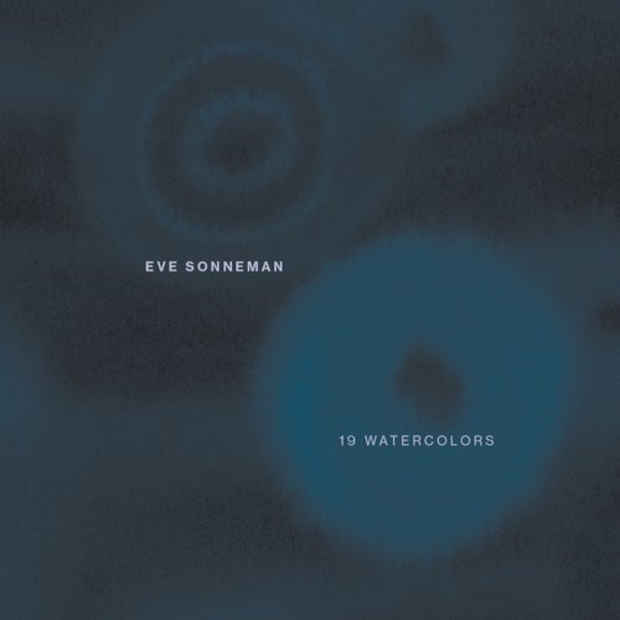Eve Sonneman “19 Watercolors”
Nohra Haime Gallery

This event has ended.
PHOSPHENE
It begins with the unassuming: a series of minuscule yellow dots, outlining
what might unfold—but never exactly does. Marking where the paintbrush
will strike the paper, the dots are the foundation, the unsung element of the
composition, almost a secret between the artist and the paint. As a child in
Chicago, long before she established herself as an artist in New York, Eve
Sonneman’s Oma instructed her in this traditional wet-on-wet watercolor
technique that she herself had learned in Germany. The process is a simple
one: gingerly hinting where one might commit to placing the brush before the
painting process begins—swift and confident, no hesitation possible, the final
work erasing all traces of any premeditated thought.
This childhood lesson from her grandmother eventually manifested as a ritual
in Eve’s life: the simple act of sitting and observing one’s surroundings in
plein air, capturing nature’s ephemerality in a medium that is itself quite
mercurial. Despite its consistent presence in her routine and oeuvre—and
although Eve’s former esteemed gallerist, the legendary Leo Castelli,
exhibited a series of Eve’s watercolors in 1984—for the most part, these
paintings have remained a more clandestine aspect of Eve’s artistic practice. It
is Eve’s photography that has been most widely exhibited, in addition to her
large-scale oil on linen paintings. Instead, her watercolors have consistently
inhabited a space of daily meditation, opening the mind, relaxing the flow of
thoughts to come for the day. They are a series grounded as much in the
personal as they are in happenstance.
Of all artistic mediums, watercolor and photography are inherently linked to
time in inextricable ways—disparate yet intertwined. In her photography, Eve
is known for eclipsing the decisive moment through a distinct process of
selecting two frames next to one another on the contact sheet and from this
creating a diptych print. What results for the viewer is the immediate sense
that we have arrived at the images’ subject too early or too late. This
impression is quickly trailed by a second sensation, one that challenges us to
consider what the moment itself was. Through Eve’s lens, we see time’s
passage in order to understand the impossibility of fully capturing it: time
exists because of its inability to pause. Nonetheless, photography, in Eve’s
own words, is a “planned adventure”, a process grounded in the mind as much
as through the eye.
Watercolor plays with time differently—the adventure cannot be planned.
Often looking to the clouds in motion, Eve attempts to conjure the transient
light, the shifting peculiarities of the sky, and her surroundings (she only
paints in watercolor outside). The instant the tip of the paintbrush makes
contact with the dampened paper, the pigment seeping and reaching, these
captured elements have shifted in their origin, even imperceptibly. It is a cat
and mouse game whose end goal is less to render, but more to offer a sort of
collaboration and dance between the perceived and the presented, the
observed and the experienced. As with Eve’s photographs, time here is also
eclipsed, not because it is frozen, but rather because it remains very much in
motion. There is not one moment to be captured, but an infinite unfolding.
The repeated, globe-like circles in Eve’s watercolors, their edges soft and
blurred, evoke a range of associations. There is a permeating warmth, akin to
closing one’s eyes after looking directly toward the sun, an abstract sphere
still present, softly glowing. At other moments, the colliding colors recall
something more earthly and organic, like seeing an organism under the
microscope, a tiny entity typically unseen, now magnified and explored. Each
painting is a universe contained, but only a sampling of the larger atmosphere
that inspired them.
With such expansiveness through their simplicity (and within the confines of
a modestly sized piece of paper), the works are willfully open-ended: artistic
intent yields to intuition. The paintings are a gentle musing on what it means
to hold an artistic practice: consideration, repetition, and ultimately, presence.
Perhaps it simply comes down to Eve’s own words on the medium: other
forms of painting are about building an image, but watercolors are about
freeing it.
SABRINA TAMAR
Media
Schedule
from October 12, 2022 to November 05, 2022
Opening Reception on 2022-10-12 from 18:00 to 20:00